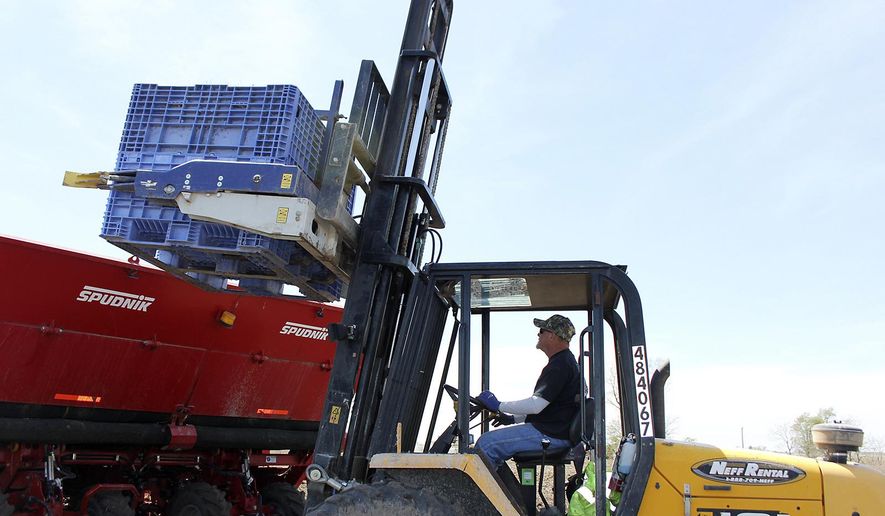LETTS, Iowa (AP) - Jay Kemp isn’t a farmer, but in a few days, he will have more than 100 acres of grass rhizomes on his property.
He won’t have to weed or spray his fields and in a year’s time, when the grass grows tall enough to be harvested, Kemp won’t harvest it.
The University of Iowa will.
The university has been burning the grass, known as Miscanthus, in its power plant to reduce its reliance on coal. At first glance, Miscanthus does not look like much. It begins as ginger-like rhizomes. As a grown plant, it is reminiscent of sugar cane, with tough dry stalks that sway in the wind.
But burning one acre of Miscanthus can offset four tons of coal in the power plant. And a field of Miscanthus can grow for a decade or more without replanting. Miscanthus is also ideal for Iowa because it can tolerate the harsh Iowa winters, and can’t produce seeds, so it won’t invade neighboring fields.
Erin Hazen, renewable energy business development manager at the University of Iowa, said replacing coal with Miscanthus makes environmental sense.
“For the university to stop using coal in its plant has benefits to all of eastern Iowa,” she said. “Coal is not great for the environment. Coal has problematic emissions that Miscanthus and other biofuels (don’t have).”
Since 2015, she said, the university has reduced its greenhouse gas emissions by more than 17 percent.
It also makes economic sense. The university’s power plant has a $14 million budget for fuel, some of which is used for coal.
“The money that we spend on coal, right now, that is money that’s all going out of state, but really we want to divert that so we spend the money in state, so it’s income for growers,” Hazen said.
The university wants to generate 10 percent of its energy from Miscanthus, using other biomass fuels for the other 90 percent, with the goal of reducing and eventually eliminating its dependence on coal by 2025, the Muscatine Journal (https://bit.ly/2oowCbN ) reported.
So far, the venture - the Biomass Fuel Project - has recruited about 15 growers and more than 800 acres of Miscanthus across eastern Iowa.
For Kemp, who lives in Letts, the decision to rent his fields to the University of Iowa was one of convenience.
“I’m getting just as much out of this as if I were to rent it to a farmer,” he said. “I don’t have to fertilize it or do anything at all.”
He had heard about the Miscanthus venture from another grower in the area and signed up about a month ago.
On April 22, he opened his home to curious locals for a Miscanthus planting demonstration. Officials from the University of Iowa and some of its partners came by to answer questions. Some of these partners include Iowa State University and agricultural service firm Aggrow Tech, who planted the Miscanthus on Kemp’s property. The planting demonstrations, Hazen said, help the university attract other growers who may be interested in growing Miscanthus in their fields.
___
Information from: Muscatine Journal, https://www.muscatinejournal.com




Please read our comment policy before commenting.